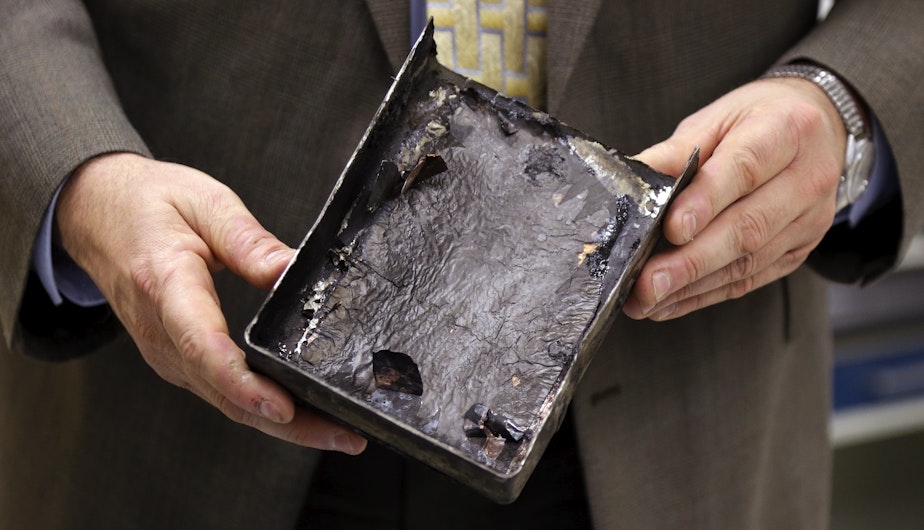Boeing Never Considered Possibility Of 787 Battery Fires New Report Says

A report from the National Transportation Safety Board says Boeing, its contractors and the Federal Aviation Administration share the blame for a fire in a 787's lithium-ion battery at Boston's Logan Airport two years ago. That fire was one of two incidents that led to the grounding of the Dreamliner fleet in 2013.
The NTSB said the fire on the tarmac at Boston Logan was the result of a short-circuit in a single battery cell. It resulted in smoke, which Boeing said would be a one in 10 million event. But then it spread to other cells, causing a wave of extreme heat known as a thermal runaway and fire.
The NTSB found that Boeing never considered the possibility that fire could occur, so it never dealt with the issue as it prepared the battery and the 787 plane for flight certification. The safety board also found that because Boeing never thought of it, neither did the Federal Aviation Administration.
The NTSB said the battery short circuit was not the result of mishandling. It found that subcontractor GS Yuasa of Japan did not meet established industry standards. Among the errors: small bits of solder inside batteries and tiny folds in hand-made battery cell components that needed to be perfectly smooth.
Contractor Thales of France was supposed to watch over the subcontractor's manufacturing process, but did not catch the mistakes. Boeing was ultimately responsible, but the problems fell through the gaps.
In a curious footnote, the NTSB found that the cell that caused the fire at Boston Logan Airport was either cell five or six of eight. The Japan Transport Safety Board's report on a 787 battery incident at Takamatsu Airport also blamed cell six. That battery began to smoke while the plane was in flight, forcing an emergency landing.
The report contained more than a dozen recommendations to prevent these mistakes from happening again. They were mostly aimed at the FAA, which did not respond to the Safety Board's findings.
Boeing said it won't argue with them. In a statement, the company says it will keep on improving the plane as long as it is being built.
